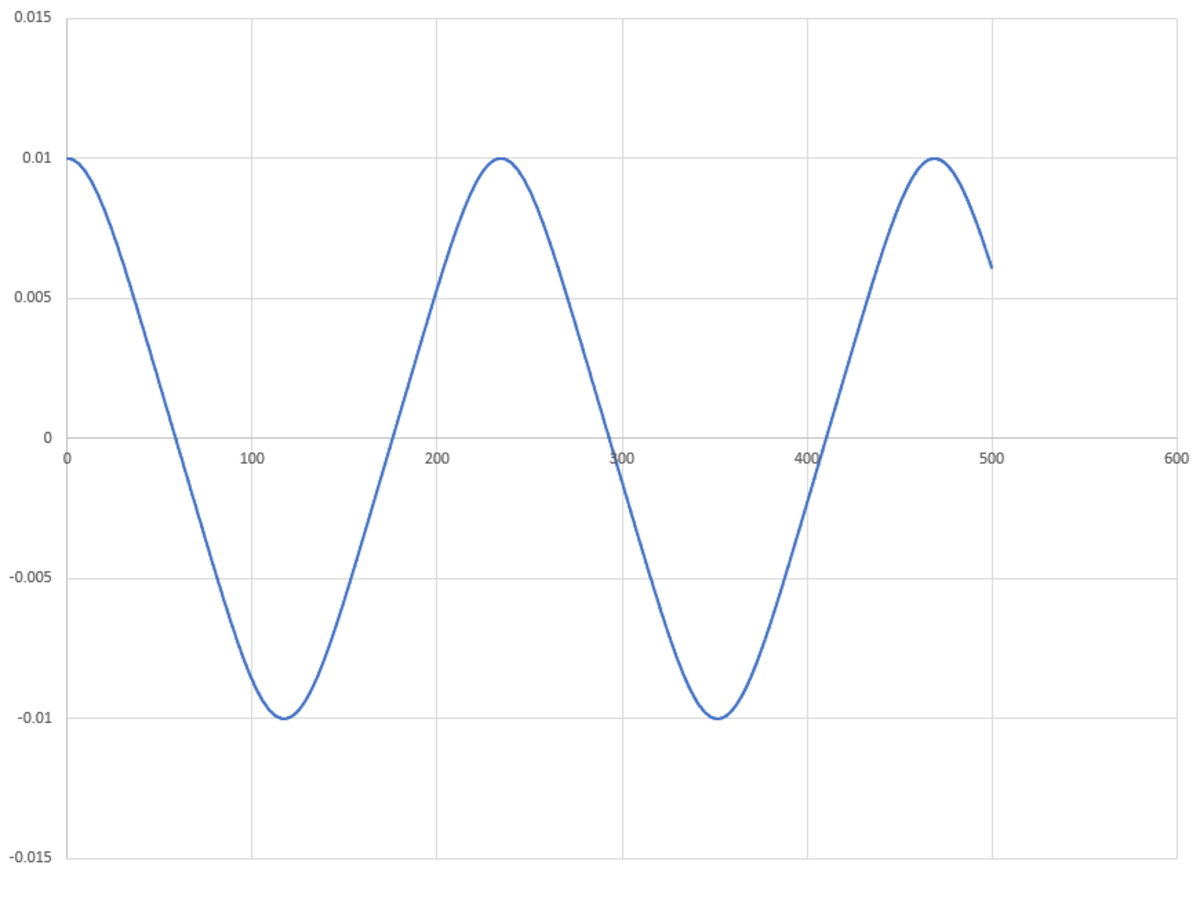Is the Motion Simple Harmonic?
The following problem is inspired by this .
Consider the situation as shown in the diagram:
The point mass , initially at the origin, is attached to two balls which are fixed to the points indicated on the diagram at all instants of time. The springs are identical with stiffness and have an unstretched length of . Gravity is absent in this scenario.
The mass is given a very small initial displacement to the right, along the x-axis and released. It is asserted that the resulting motion is simple harmonic in nature. Is the assertion true or false? Explain why.
Note: Select the option 'true' if the motion is simple harmonic.
This section requires Javascript.
You are seeing this because something didn't load right. We suggest you, (a) try
refreshing the page, (b) enabling javascript if it is disabled on your browser and,
finally, (c)
loading the
non-javascript version of this page
. We're sorry about the hassle.

The answer is false.
The equation of motion for a simple harmonic oscillation is: x ¨ + ω 2 x = 0
The equation of motion, for small displacements, for the given system is:
x ¨ + k x 3 = 0
The movement of the mass is confined along the x-axis due to the symmetry in the situation and the motion is oscillatory in nature. However, the equation of motion does not fit the same structure as that of a harmonic oscillator.
Say the block has moved a distance x to the right along the x-axis. At this instant of time, The length of each spring is:
L s = x 2 + 1
The total potential energy of the system is:
V = 2 ( 2 1 k ( L s − 1 ) 2 )
The kinetic energy of the block is:
T = 2 1 x ˙ 2
The total energy of the system is conserved and is:
E = T + V
Since the energy is constant, the above expression can be differentiated with respect to time and equated to zero: d t d E = 0
Performing the calculation and simplifying gives:
x ¨ + x 2 + 1 2 k x ( x 2 + 1 − 1 ) = 0
Now, we consider the case where the displacements are small ( x < < 1 ). This can be considered by expanding the terms x 2 + 1 and x 2 + 1 1 , and neglecting higher powers of x . By doing so:
x ¨ + 2 k x ( 1 + 2 x 2 − 1 ) ( 1 − 2 x 2 ) = 0
Neglecting the x 5 term leads to:
x ¨ + k x 3 = 0